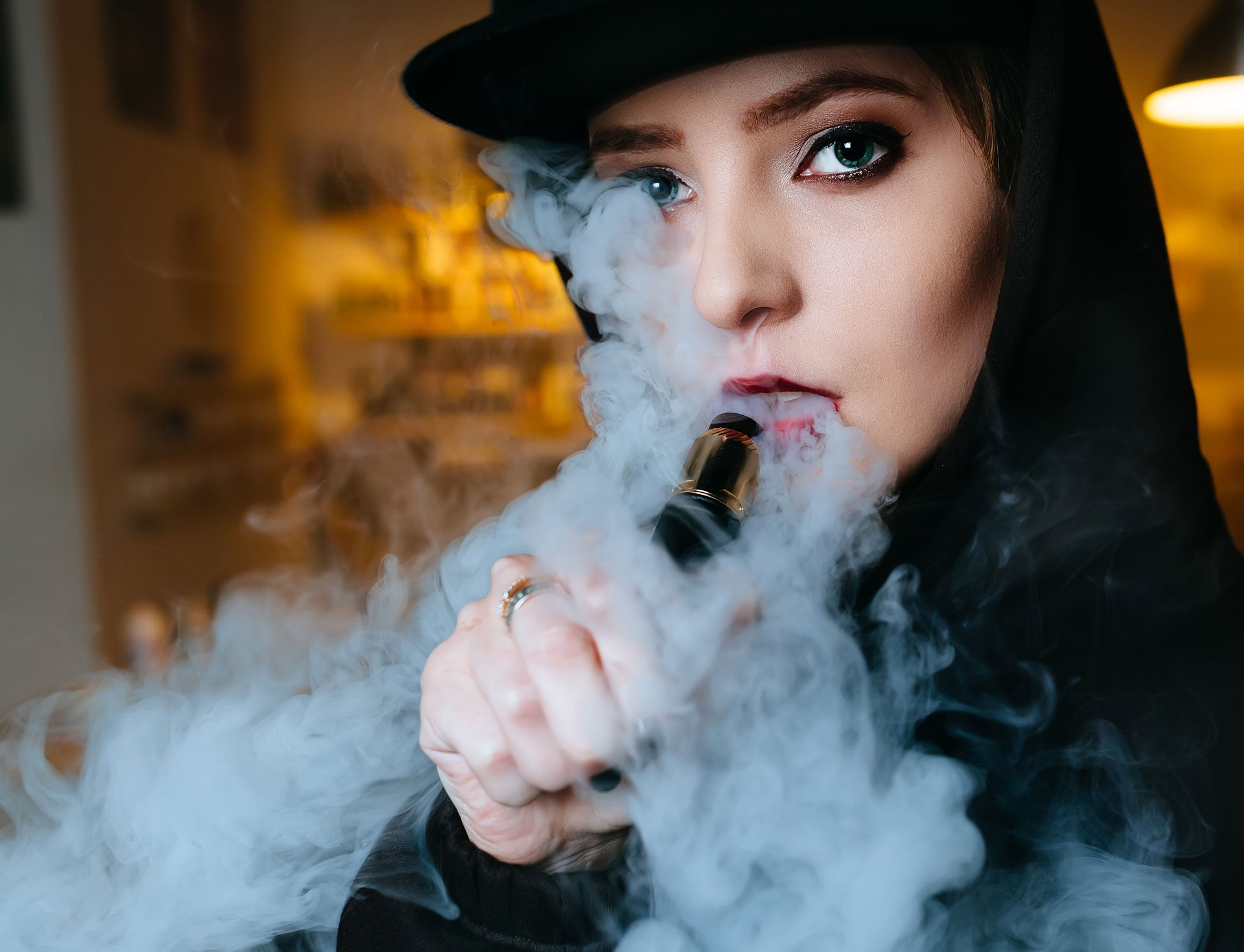
The mystery vaping-related illness which has been dominating headlines in recent weeks finally has a name – EVALI, which stands for ‘e-cigarette or vape use associated lung injury’. The US Centres for Disease Control and Prevention (CDC) christened the affliction in a statement, reporting 1,299 confirmed and probable cases of EVALI across the District of Columbia, 49 states and the US Virgin Islands. In total, 26 EVALI deaths have now been reported across 21 US states.
In cases where information about EVALI patients’ age was available, a striking 15% were under 18, the youngest of whom were only 13 years old.
The Trump administration has endeavoured to ban the sale of most flavoured e-cigarette and vaping products, leaving only ‘tobacco’ flavoured substances on the market – the question of how well these products actually mimic the taste of tobacco notwithstanding.
The ban would also include mint and menthol flavoured vape products, which many manufacturers argue should not be considered ‘flavours’. Since 2009, flavoured cigarettes have been banned in the US, with the exemption of menthol.
Doctor4U consultant Dr Daniel Cichi says: “While vaping does have its risks, the alternative is far more dangerous. Cigarettes contain over 7,000 chemicals that are toxic, while vaping exposes you to far fewer chemicals. However, both contain nicotine, which is a highly addictive and toxic substance which raises blood pressure and heart rate and increases your risk of stroke and heart attack.”
Vaping and childhood trends
Vaping has proven immensely popular among high school students in the US. A study recently published in the New England Journal of Medicine says that one in four 12th grade students had vaped within the previous 30 days, as well as one in five in 10th grade and one in 11 in eighth grade.
How well do you really know your competitors?
Access the most comprehensive Company Profiles on the market, powered by GlobalData. Save hours of research. Gain competitive edge.

Thank you!
Your download email will arrive shortly
Not ready to buy yet? Download a free sample
We are confident about the unique quality of our Company Profiles. However, we want you to make the most beneficial decision for your business, so we offer a free sample that you can download by submitting the below form
By GlobalDataThe move to ban flavoured e-cigarettes in the US has been prompted by fears that, with their sweet, candy-like flavours, they have more appeal to children than they do to adult smokers looking to switch to a less harmful method of nicotine delivery. The way vape and e-cigarette brands have marketed their products isn’t helping this perception.
American teenagers by and large favour the Juul vape pen, which has a 72% share of the US e-cigarette market. In early 2019, a team of researchers at Stanford University published a white paper on Juul’s advertising over its first three years on the market, and came to the conclusion that Juul’s early ads were “patently youth-oriented.”
Many of the company’s colourful early adverts used humour, pop culture, and cartoon imagery to peddle the product, with social media influencers hired to post pictures using the product. The imagery shifted by early 2016 to a more mature, muted aesthetic which appeared to focus on relaxation and socialisation, but still presented the Juul as more of a luxury tech product than a cigarette alternative.
By early 2018, under growing legislative and media scrutiny, the company’s promotional material instead began to feature testimony from adult ex-smokers – adverts which, to a teen consumer, would presumably appear pretty bland an unappealing. Its Instagram and Facebook accounts, which had large youth followings, were also shut down.
However, despite the questionable marketing practices of Juul and other similar vape products – Kandypen vapes, for example, have been promoted in several hip-hop music videos – and the suspected appeal of sweet flavours to young people, an outright ban on flavoured e-cigarettes might not be the best course of action to take in the name of public health.
University of Oxford professor of behavioural medicine Paul Aveyard says: “Banning flavourings is likely to be counterproductive because it will reduce the attractiveness of e-cigarettes. People who vape have almost all been smokers, and anything that reduces the pull of e-cigarettes is reducing the pull away from smoking, which is far more dangerous than vaping.”
The removal of mint and menthol vape products has also been called into question, in a country where menthol cigarettes are allowed to remain on the market.
According to the CDC, almost nine in ten African-American smokers favour menthol cigarettes. It’s thus hard to deny that removing e-cigarettes in this flavour will disproportionally affect black smokers if they become unable to vape flavours they enjoy, and are limited to the unpopular taste of tobacco.
In light of this, regulators cracking down on vapes without batting an eye at menthol cigarettes appear to be more concerned with the user demographics of these products than their overall risk to public health.
Speaking to the Washington Post, Campaign for Tobacco-Free Kids president Matt Myers said: “Juul has created more public outrage in a shorter period of time than any other company I can think of. When you prey on middle-class white kids, Republican or Democrat, you will make a lot of people angry.”
EVALI and off-brand produce
As well as the murky racial politics of the vaping lobby vs big tobacco, there’s another fly in the ointment.
Of the CDC’s 1,299 noted EVALI patients, 573 reported which substances they were vaping in the 90 days preceding symptom onset. The majority (76%) reported using THC-containing products which are completely unregulated in the US, 58% doing so exclusively.
“The large majority of deaths appear to be related to vaping unregulated and contraband THC oils in the e-cigarette,” Aveyard says. “Consumers in the UK vape e-liquids that are regulated by the Medicines and Healthcare Regulatory Authority, which ensures that the constituents are likely to pose a low risk to health. There is no such regulation in the US. We have not seen the same outbreak of serious lung illness in the UK as has been seen in the US.”
When vaping cannabis, the substance is usually suspended in an oil form, while nicotine usually comes as a liquid. Many CBD and THC vape products have been shown to contain vitamin E acetate, an oil which is considered safe for skincare but not for inhalation. In September, the Associated Press tested 30 vape products marketed as CBD and found that ten contained dangerous synthetic marijuana and many had little to no CBD at all. Plus, vaping oil in general probably isn’t a good idea.
University of Nottingham professor of epidemiology John Britton says: “The lung hasn’t evolved to deal with inhaled oil. It needs fresh air. Oil deposits trigger inflammation.”
So, when the lion’s share of EVALI cases appear to have been caused by unregulated marijuana e-cigarette products, trying to remove regulated nicotine vape juices from the market seems counterintuitive. The popularity of nicotine vapes with teenagers is undeniably concerning, but when there’s a far clearer link between unregulated cannabinoid oils to serious e-cigarette –related illness it seems regulators are going after the wrong target.
Cichi says: “Counterfeit vapes have not had the same testing and potentially have far more damaging chemicals in them than legal vapes. Removing regulated and tested vape products from the market does not solve the problem but is actually creating more problems as counterfeit vapes have greater health risks.”
Taking regulated e-cigarettes off the market would obviously decrease their use among teenagers, but would likely cause more problems than it solved. Adult smokers would lose by far the most appealing option to wean themselves off of cigarettes, which are undeniably more damaging than vapes, with a disproportionate impact on black smokers. Plus, the majority of EVALI cases appear to be related to the use of unregulated cannabis oils in the devices – taking ‘safe’ vape products off the market may well increase their use in turn, as well as the use of other counterfeit products.
“When any new product is launched, regulatory authorities have to take a reasoned judgement about whether it is likely to pose a significant danger to users,” says Aveyard. “Based on what we know is in cigarette smoke and what we know is in the vapour of an e-cigarette, it seems highly probable that e-cigarettes will, in ten to 20 years, be proven to be safer than smoking.”
Read more: Vaping flavours: The UK has some odd tastes when it comes to vaping




